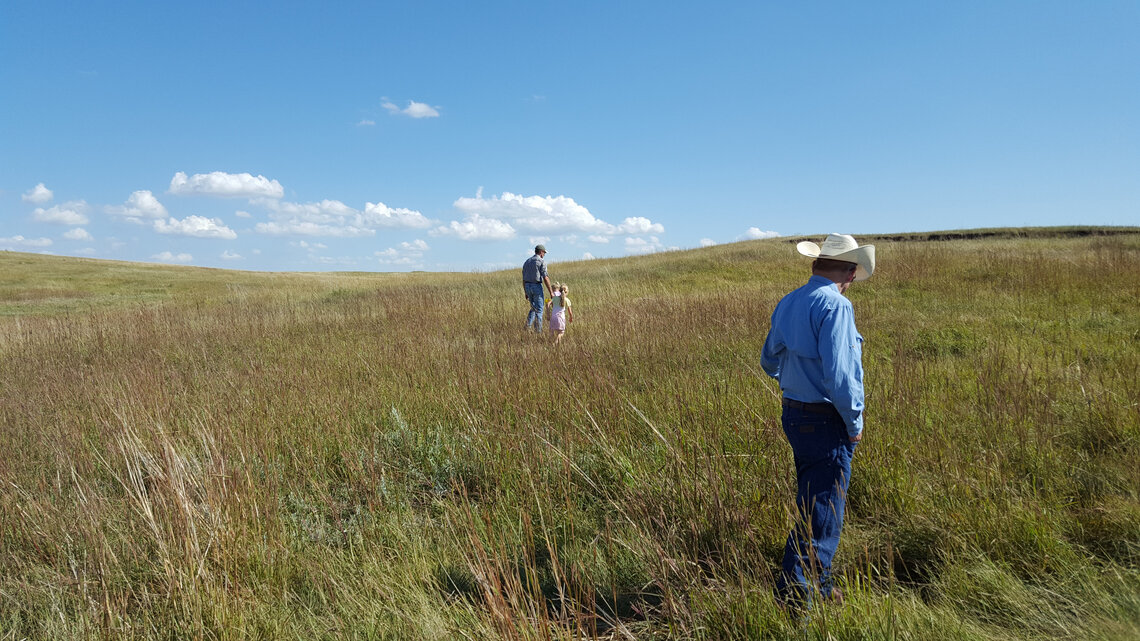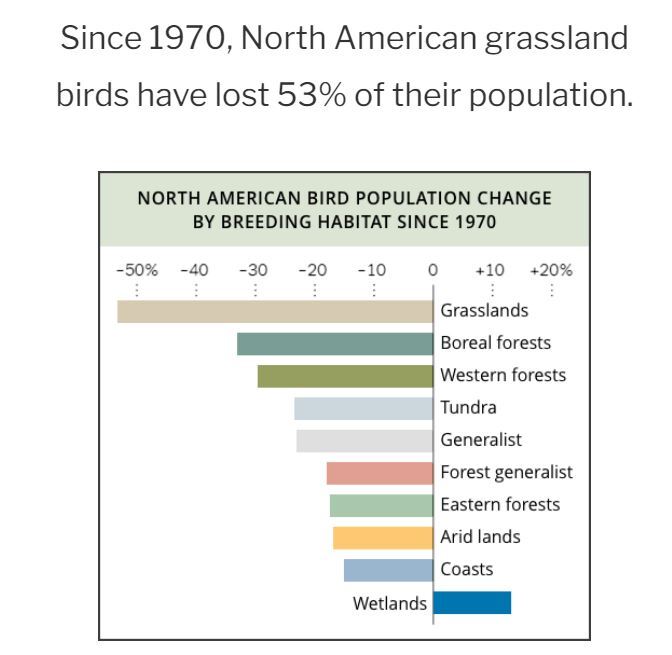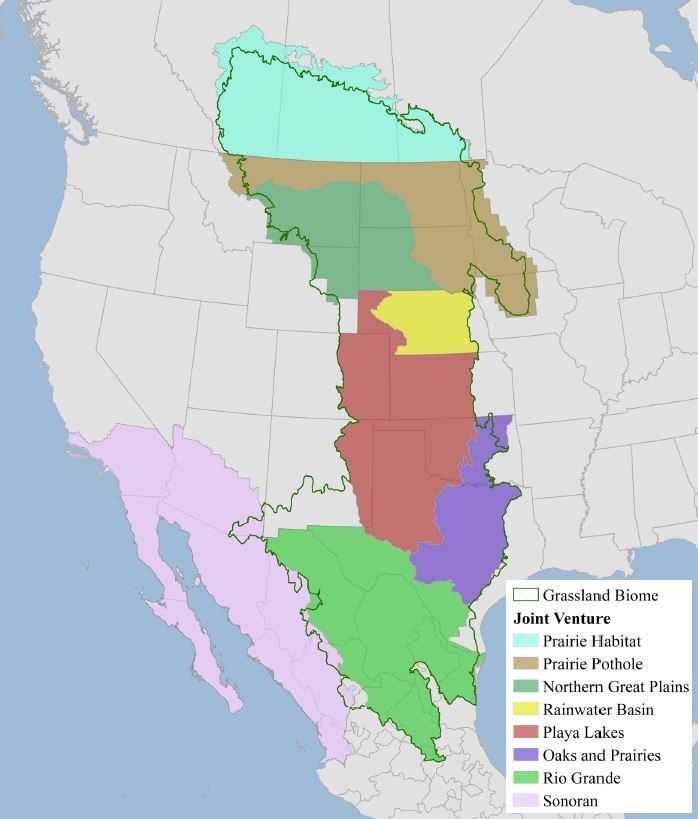
Grassland habitat and ranchers (photo courtesy of Dan Casey).
By Jennie Duberstein and Aimee Roberson, JV8

While populations of birds that depend on wetland habitats have rebounded due to conservation efforts, other birds are declining at rapid rates, especially those that depend on grasslands (Data from Rosenberg, K. V., et al. 2019. Decline of the North American avifauna. Science 366: 120-124. Graphic by Miruh Hamend, Playa Lakes Joint Venture).
North America’s native grasslands are disappearing. When we lose our grasslands, we lose not only birds but also pollinators, working lands, opportunities for hunting and outdoor recreation, carbon sequestration, and water security. These losses adversely affect rural communities and economies across the continent.
Over the last 40 years, North American grassland bird populations have declined faster than any other group of birds. Over three-quarters of grassland bird species have shown significant population declines.
Through the JV8 Central Grasslands Conservation Initiative (JV8), eight Migratory Bird Joint Ventures — representing over 63 federal, state, provincial, non-profit, and industry conservation partners from the U.S., Canada, and Mexico — are collaborating to stem grassland losses and the negative impacts to migratory birds. The JV8 is implementing grassland conservation programs across a landscape of 500 million acres and across multiple nations with the goal of reversing or stabilizing the decline of bird populations in the central grasslands of North America.
Migratory Bird Joint Ventures (JVs) have learned how to turn things around for wetland birds and are now applying that strategy to grassland birds. To date, the JVs have completed a Grassland Assessment of North American Great Plains to understand the extent of undisturbed native grasslands across the tri-national geography. The partnership recently received a grant to develop Tree-age: A decision support tool to target brush management and other wildlife practices to benefit rangeland management (see our article to learn more).

The territories of the JV8 Migratory Bird Joint Venture’s with the extent of grassland biomes outlined in green (map created by the JV8).
Meet the JV8 Partnership
While the Migratory Bird Joint Ventures work with diverse partners, they do not always have the opportunity to work with one another across their individual boundaries. JV8 represents a unique opportunity for joint ventures to work together to address a common goal for grasslands conservation. This partnership of Joint Ventures includes the Northern Great Plains, Oaks and Prairies, Playa Lakes, Prairie Habitat, Prairie Pothole, Rainwater Basin, Rio Grande, and the Sonoran. Check out their websites to learn more about their work.
In October 2020, Graeme Patterson became the JV8 Conservation Director. Graeme’s role is to drive the creation and implementation of a JV8 Strategy and coordinate conservation efforts to address causes of declining grassland bird populations across the eight Joint Ventures. Graeme comes to the JV8 from Denver Zoological Foundation where he was the Vice President for Field Conservation. In this role, he delivered field conservation and research projects in the southern Great Plains and around the world (Peru, Mongolia, Botswana, and Vietnam) where he focused on ecosystem restoration involving multiple partners and stakeholders. Prior to his Denver Zoo work, Graeme was the Deputy Director of the Wildlife Conservation Society’s Africa Program where he honed his skills as a conservation manager, strategic planner and technical advisor.
By working together, the JV8 vision is to create a world where the central grasslands from Canada to Mexico support stable, thriving, and diverse communities of birds, other wildlife, and people into the future. Fly over to JV8.org to keep up with the latest happenings.


 English
English  Español
Español